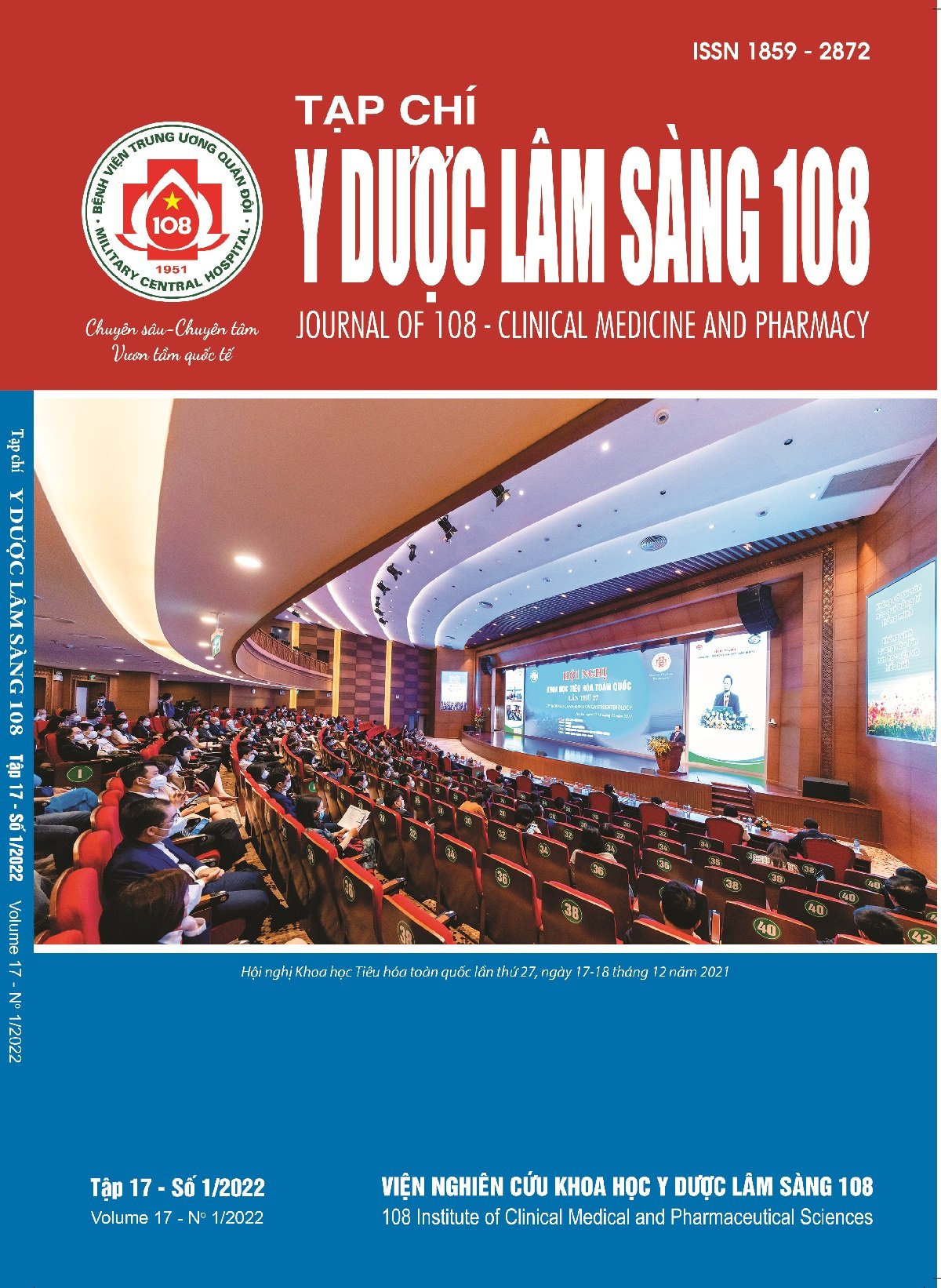Clinical and paraclinical features for stable three-vessel coronary artery disease patients
Main Article Content
Keywords
Abstract
Objective: The aim of this study was to describe baseline clinical and paraclinical features in a group of patients with stable three-vessel coronary artery disease patients with Syntax score ≤ 22 underwent PCI. Subject and method: We assigned 177 patients with stable three-vessel disease to undergo PCI in Tam Duc Hospital from 01/2017-10/2020. The disease was defined when ≥ 70% stenosis was present in each major epicardial coronary artery. The cross-sectional descriptive and prospective study, documented clinical sign, paraclinical sign and coronary risk factors. Result: The study included 177 patients, mean age 65.94 ± 10.85 years and male 67.2%. Mean BMI 23.85 ± 2.97. The coronary risk factors observed were hypertension (89.8%), dyslipidemia (88.1%), diabetes (44.1%), smoking (14.1%), family history (11.3%). High prevalence typical chest pain CCS II, CCS III, ST-T change on ECG: 19.2%. Preserved EF ≥ 50%: 81.4%. Non-invasive stratification test: Intermediate risk 21.5%, high risk: 78.5%. The mean Syntax score was in 15.84 ± 3.85 (7 - 22), and high prevalence lesion was in LAD: 98.9%, LCX: 99.4%, RCA: 100%, the prevalence of left main coronary heart disease was 14.8%. No significant between complete and incomplete revascularization group. Conclusion: The most common coronary risk factors observed were hypertension, dyslipidemia. The most common symtoms is CCS II and CCS III. Low rate of ST-T change on ECG. High rate of preserved LVEF ≥ 50%. High prevalence high risk Non-invasive stratification test. The mean Syntax score was in 15.84 ± 3.85 (7 - 22), and the prevalence of left main coronary heart disease was low.
Article Details
References
2. Vũ Điện Biên, Phạm Nguyên Sơn, Phạm Thái Giang và cộng sự (2017) Giáo trình nội tim mạch, Tập III. Nhà Xuất bản Y học, tr. 159-174.
3. Bhatt DL et al (2006) International prevalence, recognition, and treatment of cardiovascular risk factors in outpatients with atherothrombosis. JAMA 295: 180-189.
4. Arroyo-Rodríguez C et al (2018) Risk factors for three-vessel coronary artery disease in patients of Northwest Mexico. Arch Cardiol Mex 88(5): 423-431.
5. Bainey KR et al (2021) Long-term clinical outcomes following revascularization in high-risk coronary anatomy patients with stable ischemic heart disease. J Am Heart Assoc 10: 018104.
6. Davidsen L et al (2020) Long-term impact of baseline anaemia on clinical outcomes following percutaneous coronary intervention in stable angina. Open Heart 7: 001319.
7. Patel MR et al (2017) ACC/AATS/AHA/ASE/ ASNC/SCAI/SCCT/STS 2017 appropriate use criteria for coronary revascularization in patients with stable ischemic heart disease. J Am Coll Cardiol 69(17): 2212-2241.
8. American Diabetes Association. 2. Classification and Diagnosis of Diabetes (2020) Standards of Medical care in diabetes 2020. Diabetes Care 43(1): 14-32.
9. Paudel R et al (2015) Association of chest pain versus dyspnea as presenting symptom for coronary angiography with demographics, coronary anatomy and 2-year mortality. Arch Med Sci 12: 742-746.
10. Head SJ et al (2014) Coronary artery bypass grafting vs. percutaneous coronary intervention for patients with three-vessel disease: Final five-year follow-up of the SYNTAX trial. European Heart Journal 35(40): 2821-2830.
 ISSN: 1859 - 2872
ISSN: 1859 - 2872
